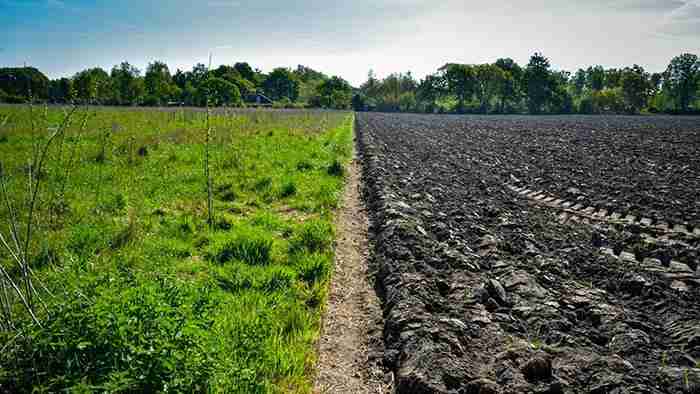As the world grapples with climate change, soil degradation, and an ever-growing global population, the agricultural sector stands at a critical crossroads. Traditional farming methods have led to significant environmental degradation, including soil erosion, water pollution, and greenhouse gas emissions. In response, regenerative agriculture has emerged as a holistic approach to restoring ecosystems, improving food security, and mitigating climate change. As this practice gains traction worldwide, the market potential of regenerative agriculture market is vast and growing, promising significant economic, environmental, and social benefits.

What Is Regenerative Agriculture?
Regenerative agriculture focuses on rebuilding and maintaining soil health, enhancing biodiversity, and fostering resilient ecosystems through a variety of practices. These include crop rotation, agroforestry, no-till farming, cover cropping, and rotational grazing. The core objective is not just to sustain the land but to improve it over time—capturing more carbon, enriching the soil, and promoting biodiversity, all while increasing agricultural productivity.
The regenerative agriculture model stands in contrast to industrial farming, which tends to deplete natural resources and increase reliance on synthetic inputs like fertilizers and pesticides. By prioritizing ecological health, regenerative agriculture offers a sustainable solution for addressing many of the pressing challenges facing modern farming systems.
Drivers of Market Potential
Several key factors are driving the growing interest and potential in regenerative agriculture:
1. Climate Change Mitigation
Regenerative agriculture has significant potential to combat climate change by increasing carbon sequestration in soils. Healthy soils are capable of storing carbon dioxide, reducing the amount of greenhouse gases in the atmosphere. Regenerative practices can capture up to 1.6 billion tons of carbon annually if adopted at scale, making it a crucial tool in the fight against climate change. As governments and corporations make bold climate commitments, regenerative farming practices are increasingly being recognized for their role in achieving net-zero goals.
2. Consumer Demand for Sustainable Products
Today’s consumers are more conscious of the environmental and social impacts of their purchasing decisions. As demand grows for food products that are ethically and sustainably sourced, regenerative agriculture is gaining traction as a solution. Consumers are seeking products that promote soil health, biodiversity, and carbon sequestration—qualities inherently embedded in regenerative practices. This shift in consumer behavior is pushing more companies in the food and beverage industry to commit to regenerative sourcing and labeling.
3. Government Policies and Incentives
Governments worldwide are beginning to recognize the value of regenerative agriculture as part of their broader climate and agricultural policies. In the United States, the Farm Bill has introduced programs to support soil health and climate-smart agriculture. Similarly, the European Union’s Green Deal includes incentives for farmers to transition to regenerative practices as part of its broader sustainability framework. Financial incentives, subsidies, and technical support for regenerative practices are likely to continue increasing, further unlocking market potential.
4. Investment and Corporate Interest
Large corporations in agriculture, food production, and retail are increasingly investing in regenerative agriculture as part of their Environmental, Social, and Governance (ESG) goals. Companies like General Mills, PepsiCo, and Unilever are funding regenerative initiatives across their supply chains, from sourcing regeneratively grown ingredients to offering farmers financial support and education. Additionally, impact investors are recognizing regenerative agriculture as a profitable and environmentally sustainable investment, further fueling its market potential.
5. Carbon Markets and Ecosystem Services
Regenerative agriculture also holds significant promise in the growing carbon credit market. By adopting regenerative practices, farmers can earn carbon credits for the carbon they sequester in their soil. These credits can be sold to corporations looking to offset their carbon emissions, creating a new revenue stream for farmers. The development of carbon trading platforms, such as Nori and Indigo Ag, is accelerating this process, unlocking market opportunities for farmers and creating a financial incentive for large-scale adoption.
Challenges to Unlocking Market Potential
Despite its promising outlook, there are several challenges that must be addressed to fully unlock the market potential of regenerative agriculture:
1. Knowledge Gaps and Transition Costs
Regenerative agriculture requires a deep understanding of ecological systems and local farming conditions. For many farmers, particularly those in conventional systems, transitioning to regenerative methods can be daunting and costly. The initial investment in education, soil testing, and new equipment can be prohibitive, especially for smallholder farmers. Providing accessible training, financial support, and expert guidance is critical to overcoming these barriers.
2. Lack of Standardization and Certification
There is no universally accepted certification for regenerative agriculture, which makes it difficult for consumers to identify truly regenerative products. While labels such as Regenerative Organic Certified and Land to Market are emerging, the absence of clear standards and certification systems can lead to confusion and greenwashing. Establishing a standardized, widely recognized certification process will help build consumer trust and support the growth of the regenerative agriculture market.
3. Market Fragmentation
The regenerative agriculture market is still fragmented, with various players in the supply chain working in isolation. From farmers and agribusinesses to researchers, policymakers, and tech companies, the market lacks cohesive collaboration and integration. Developing a more unified approach, where stakeholders can share data, best practices, and resources, will help streamline the adoption of regenerative practices.
Future Market Potential and Outlook
The future of the regenerative agriculture market is promising, with significant growth projected over the next decade. The growing demand for sustainable food products, the expansion of carbon markets, and the increasing recognition of the role of regenerative agriculture in climate action all point to a thriving market. By 2030, it is estimated that regenerative agriculture could account for up to 30% of global agricultural land, leading to a substantial reduction in emissions and improved soil health worldwide.
As governments, corporations, and consumers align behind regenerative practices, the market potential for regenerative agriculture will continue to expand. By investing in technology, education, and support systems, we can unlock the full potential of this transformative farming model, benefiting farmers, the environment, and global food security.




